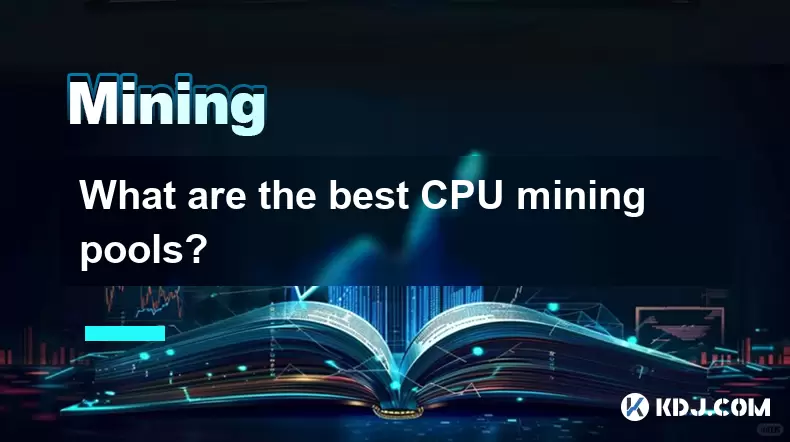-
 Bitcoin
Bitcoin $117,462.8204
-2.03% -
 Ethereum
Ethereum $3,061.1595
1.10% -
 XRP
XRP $2.9139
-2.19% -
 Tether USDt
Tether USDt $1.0002
0.02% -
 BNB
BNB $685.1357
-1.24% -
 Solana
Solana $161.3803
-2.11% -
 USDC
USDC $1.0002
0.04% -
 Dogecoin
Dogecoin $0.1948
-2.92% -
 TRON
TRON $0.2987
-0.89% -
 Cardano
Cardano $0.7330
-1.27% -
 Hyperliquid
Hyperliquid $47.7888
0.13% -
 Stellar
Stellar $0.4514
-2.93% -
 Sui
Sui $4.0169
2.74% -
 Chainlink
Chainlink $15.7088
-2.57% -
 Hedera
Hedera $0.2356
-3.33% -
 Bitcoin Cash
Bitcoin Cash $488.6656
-3.61% -
 Avalanche
Avalanche $21.2955
-1.47% -
 UNUS SED LEO
UNUS SED LEO $9.0415
0.42% -
 Shiba Inu
Shiba Inu $0.0...01332
-0.82% -
 Toncoin
Toncoin $3.0124
-0.62% -
 Litecoin
Litecoin $94.2175
-2.07% -
 Polkadot
Polkadot $4.0011
-0.61% -
 Monero
Monero $333.5714
-3.46% -
 Uniswap
Uniswap $9.1114
-1.56% -
 Dai
Dai $1.0000
0.02% -
 Ethena USDe
Ethena USDe $1.0005
0.00% -
 Bitget Token
Bitget Token $4.4951
1.87% -
 Pepe
Pepe $0.0...01242
0.47% -
 Aave
Aave $321.9943
0.51% -
 Bittensor
Bittensor $434.1984
5.13%
What are the best CPU mining pools?
Joining a CPU mining pool like xmrpool.eu or minexmr.com can boost your Monero mining efficiency with low fees and reliable payouts.
Jul 16, 2025 at 12:21 am

Understanding CPU Mining Pools
CPU mining pools are collective groups of miners who combine their computational resources to increase the chances of successfully mining cryptocurrency blocks. When a block is mined, the rewards are distributed among pool members based on their contributed hash power. Unlike solo mining, which can be highly unpredictable due to low individual success rates, pool mining offers more consistent and smaller payouts.
In the context of CPU mining, not all cryptocurrencies are suitable for this method. Some coins are specifically designed to be ASIC-resistant or GPU-resistant, making them ideal for CPU-based mining operations. These include Monero (XMR), Electroneum (ETN), and Aeon, among others. Choosing the right pool becomes critical to maximize returns and minimize downtime.
Key Factors in Selecting a CPU Mining Pool
When evaluating the best CPU mining pools, several key criteria should guide your decision:
- Low Fee Structure: Most pools charge between 0% to 2%, and lower fees mean higher net earnings.
- Payout Methods: Look for pools that support PPLNS (Pay Per Last N Shares) or PPS (Pay Per Share) systems.
- Server Locations: Proximity to servers affects latency and efficiency; choose a pool with global server coverage.
- Uptime Reliability: A stable connection ensures continuous mining without interruptions.
- User Interface & Transparency: Good pools provide real-time stats, detailed logs, and transparent reward calculations.
These factors help filter out unreliable or inefficient options when choosing where to mine.
Top CPU Mining Pools for Popular Coins
Each cryptocurrency has its own set of recommended pools. Here’s a breakdown of some of the best ones:
- Monero (XMR):
- xmrpool.eu: Known for no fees, multiple server locations, and an intuitive dashboard.
- minexmr.com: Offers both low fees and strong uptime performance.
- Electroneum (ETN):
- etn.minexmr.com: Operated by the same team as Minexmr, it provides similar reliability.
- etnpool.org: Another popular option with minimal fees and responsive support.
- Aeon (AEON):
- aeon.minexmr.com: Hosted by Minexmr, supports AEON efficiently.
- Zephyr (ZEPH):
- zeph.minexmr.com: A lesser-known but reliable pool for ZEPH mining.
Each pool has different payout schemes and user interfaces, so selecting one that aligns with your mining goals is crucial.
How to Join a CPU Mining Pool
Joining a CPU mining pool involves several precise steps:
- Choose a Compatible Wallet: Ensure you have a wallet address for the coin you're mining. For example, use the official Monero wallet if mining XMR.
- Download Mining Software: Use CPU-friendly software like XMRig, CPUMiner-Multi, or Minergate CLI.
- Configure the Miner:
- Open the configuration file or command-line interface.
- Input the pool URL and port.
- Enter your wallet address as the username.
- Set a worker name (optional but helpful for tracking).
- Start Mining: Launch the miner and monitor performance through the pool’s dashboard.
Proper configuration prevents rejected shares and maximizes efficiency.
Monitoring Performance and Earnings
Once connected, monitoring your mining activity is essential for optimization. Most CPU mining pools offer real-time dashboards showing:
- Hashrate: Indicates how much work your CPU is contributing.
- Accepted/Rejected Shares: Rejected shares may point to network issues or misconfigurations.
- Earnings Overview: Tracks daily, weekly, and cumulative income from mining.
Some pools allow email or SMS notifications for alerts related to downtime or significant changes in hashrate. Regularly checking these metrics helps identify underperforming hardware or connectivity problems.
Frequently Asked Questions
Q: Do I need a separate wallet for each mining pool?
No, you can use the same wallet address across multiple pools as long as they support the same cryptocurrency. However, using different addresses per pool can help track performance separately.
Q: Can I switch mining pools without losing my earnings?
Yes, switching pools does not affect previously earned coins. Your wallet will still receive any pending payouts from the old pool even after you've moved to a new one.
Q: How often are payouts made from CPU mining pools?
Most pools have a minimum payout threshold, typically ranging from 0.1 XMR to 1 ETN. Once this threshold is reached, payments are usually processed automatically every few hours or daily.
Q: Is it possible to mine multiple coins simultaneously using the same CPU?
Not effectively. While multi-threading allows running multiple tasks, mining two different algorithms at once can reduce overall efficiency and cause overheating. It's generally better to focus on one coin at a time.
Disclaimer:info@kdj.com
The information provided is not trading advice. kdj.com does not assume any responsibility for any investments made based on the information provided in this article. Cryptocurrencies are highly volatile and it is highly recommended that you invest with caution after thorough research!
If you believe that the content used on this website infringes your copyright, please contact us immediately (info@kdj.com) and we will delete it promptly.
- Solana Memecoins Hit the Big Time: PUMP and Sonic Get Coinbase Listing Boost!
- 2025-07-16 06:50:12
- Core Foundation's Rev+: Fueling Ecosystem Growth Through Revenue Sharing
- 2025-07-16 06:30:17
- Ripple, California, and Collaboration: A New Era for Crypto?
- 2025-07-16 06:30:17
- Roman Storm, DPRK Hackers, and Prosecutors: A Tangled Web
- 2025-07-16 06:50:12
- Bitcoin, Altcoins, and DeFi: Navigating the Evolving Crypto Landscape
- 2025-07-16 05:30:12
- DeFi Demystified: Navigating the Wild West of Decentralized Finance
- 2025-07-16 04:50:12
Related knowledge

How are crypto mining profits taxed?
Jul 14,2025 at 12:28am
Understanding Cryptocurrency Mining and TaxationCryptocurrency mining involves validating transactions on a blockchain network and earning rewards in ...

How to keep a mining rig cool
Jul 12,2025 at 01:42pm
Understanding the Importance of Cooling in Mining RigsCryptocurrency mining is an intensive process that places heavy demand on hardware components, p...

Can you mine crypto on a laptop?
Jul 16,2025 at 02:21am
Is It Feasible to Mine Cryptocurrency on a Laptop?Mining cryptocurrency on a laptop is technically possible, but feasibility depends heavily on the ha...

Is crypto mining worth it?
Jul 16,2025 at 01:21am
Understanding the Basics of Crypto MiningCrypto mining refers to the process of validating transactions on a blockchain network by solving complex mat...

How much does it cost to start crypto mining?
Jul 13,2025 at 12:22am
Understanding the Basic Costs of Crypto MiningStarting crypto mining involves several upfront and ongoing expenses. The primary costs include hardware...

What is the most profitable crypto to mine?
Jul 13,2025 at 07:00am
Understanding Mining Profitability in CryptocurrencyWhen evaluating the most profitable crypto to mine, it's essential to consider several factors tha...

How are crypto mining profits taxed?
Jul 14,2025 at 12:28am
Understanding Cryptocurrency Mining and TaxationCryptocurrency mining involves validating transactions on a blockchain network and earning rewards in ...

How to keep a mining rig cool
Jul 12,2025 at 01:42pm
Understanding the Importance of Cooling in Mining RigsCryptocurrency mining is an intensive process that places heavy demand on hardware components, p...

Can you mine crypto on a laptop?
Jul 16,2025 at 02:21am
Is It Feasible to Mine Cryptocurrency on a Laptop?Mining cryptocurrency on a laptop is technically possible, but feasibility depends heavily on the ha...

Is crypto mining worth it?
Jul 16,2025 at 01:21am
Understanding the Basics of Crypto MiningCrypto mining refers to the process of validating transactions on a blockchain network by solving complex mat...

How much does it cost to start crypto mining?
Jul 13,2025 at 12:22am
Understanding the Basic Costs of Crypto MiningStarting crypto mining involves several upfront and ongoing expenses. The primary costs include hardware...

What is the most profitable crypto to mine?
Jul 13,2025 at 07:00am
Understanding Mining Profitability in CryptocurrencyWhen evaluating the most profitable crypto to mine, it's essential to consider several factors tha...
See all articles

























































































